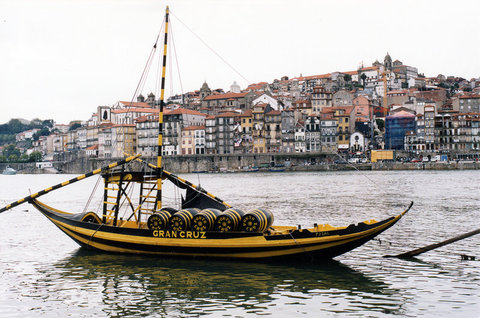Portuguese wine

Traditional rebelo boat, used to transport Port Wine
Portuguese wine is the result of traditions introduced to the region by ancient civilizations, such as the Phoenicians, Carthaginians, Greeks, and mostly the Romans. Portugal started to export its wines to Rome during the Roman Empire. Modern exports developed with trade to England after the Methuen Treaty in 1703. From this commerce a wide variety of wines started to be grown in Portugal. And, in 1758, the first wine-producing region of the world, theRegião Demarcada do Douro was created under the orientation of Marquis of Pombal, in the Douro Valley. Portugal has two wine producing regions protected by UNESCO as World Heritage: the Douro Valley Wine Region (Douro Vinhateiro) and Pico Island Wine Region (Ilha do Pico Vinhateira). Portugal has a large variety of native breeds, producing a very wide variety of different wines with distinctive personality.
History
During the Reconquista in the 12th and 13th centuries, with the populating (povoamento) of the conquered territories, areas due to religion the Arabs reduced wine production. During this period, some new varieties were added to the ancient ones, from Burgundy came the French varieties. And during the period of discoveries, Henry the Navigator brought to the newly discovered island of Madeira the Moscatel andMalvasia from the Greek Island of Crete. In the Reign of King Carlos, the Região Demarcada do Vinho Verde and the Região Demarcada do Dão among Colares, Carcavelos, Setúbal, and Madeira were created. In 1979, Bairrada was added and in 1980 the Algarve region (Lagoa, Lagos, Portimão, and Tavira) was finally demarcated. In 1998, the Alentejo region was demarked by the gathering several smaller demarked regions created in 1995.
References
From Wikipedia, the free encyclopedia;http://en.wikipedia.org/wiki/Portuguese_wine
References
From Wikipedia, the free encyclopedia;http://en.wikipedia.org/wiki/Portuguese_wine
